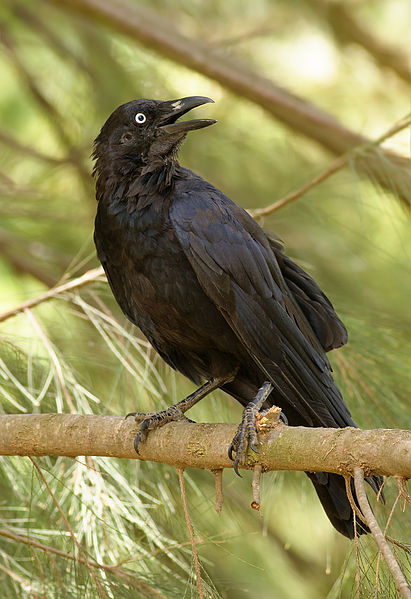GGOL, GGAAK
Wild Word Friday!
I thought we might have a short lesson in the Ahtna Athabascan language today. Athna is the language of the Ahtna ethnic group in the southwestern area of mainland Alaska. The original Native speakers lived in central Alaska. Today there are less than 100 Native speakers of the 4 dialects of the language. (Three dialects still in use.)
The two Ahtna words in the title of this post refer to the sounds made by a raven. According to Ahtna speakers, GGOL is the sound a raven makes when it is approaching food or when it’s somersaulting in the air.
GGAAK is the regular caw of a raven. If you live in a place where ravens live, you will have heard that raucous GGAAK sound. It seems to me that ravens make that sound just to tell us, “Look. I am here, high above you. Where are your wings? GGAAK! GGAAK! GGAAK! Ha! Ha! Ha!”
GGOL and GGAAK are onomatopoeic words in that they imitate sound. Here’s a little pronunciation guide. (I’ll admit that I can’t say either word well, but then again I’m not a raven.)
In Ahtna Athabascan, the double g sound has no equivalent in English. It signifies an almost glottal stop (Like we use in the English word oh-oh.) If you raise the back of your tongue to the top of your soft palate, open your mouth wide and try to say “ga,” that’s pretty close. The Athna o is similar to the English o in the word or. The l is much like the ls in the English word lily. Put them all together and you have GGOL.
For GGAAK, we again have those hard-to-pronounce double gs. The double a sound is like the aw in our English word law. K is another one of those sounds in which the speaker raises the back of the tongue to the soft palette. Do that and add a “ka” sound. I can say the word best by keeping my mouth open as I pronounce it.
As I studied Native languages to write my Alaska novels, I did not study with any hope of becoming fluent or even gaining the ability to pronounce many of the words. I studied to learn how the people viewed their world. That the Ahtna language contains multiple words just to describe the sounds made by one animal or bird tells us how in touch they are with their surroundings, a necessity to survive in their harsh and beautiful environment.
I love to watch ravens. They are extremely intelligent, very acrobatic, and seem to have a sense of humor. In the winter, on very cold below-zero days (that’s in Fahrenheit), if a raven flies over your head, you can hear the sound of its wings very clearly as they beat the air. If I were to make up my own onomatopoeic word for it, the word would be a loud whisper spelled like this: wheek, wheek, wheek, wheek.
What is your favorite wild bird? Can you describe the sound it makes?
Blessings!
Sue
(Photo by JJ Harrison, Creative Commons License. Some information is from Wikipedia and from the AHTNA ATHABASKAN DICTIONARY, James Kari, editor.)

I love the red Robin, I never saw one in the Netherlands but here in Ireland I see one every week. I actually don’t know what sound they make. It must be something like: flllie flllie fluuuut :))
Our culture in southern British Columbia and the Vancouver area is greatly influenced by the Indigenous peoples. I’m afraid my tongue can’t find a way to pronounce their languages… for instance, the words I find on the road signs to Squamish, BC (i.e., “Sḵwx̱wú7mesh”) even if I know what they mean.
As for a favourite bird, it’s hard to pick only one. I’m fascinated by hummingbirds and chickadees… tiny but feisty. I love the vibrant colour and boldness of Stellar’s jays, although their raucous squawks aren’t attractive.